Ukrainian Carol
Holiday
-
Ships in 3 to 4 weeks
Details
Description
SKU: CN.16960
Holiday. Composed by David Madeira. Score and parts. Duration 5:40. Published by C. Alan Publications (CN.16960).This arrangement of Carol of the Bells looks back to the Ukrainian version for inspiration, realizing the folk theme for percussive timbres. It is scored for 4 marimbas plus crotales. A beautiful arrangement!
This popular theme of the Christmas season is based on a Ukrainian folk tune, "Shchedryk," which actually has nothing to do with Christmas. First arranged for voices by Ukrainian composer Mikhail Leontovich, it was later adapted to an English text by Peter Wilhousky and given the Christmas-themed title "Carol of the Bells." This arrangement looks back to the Ukrainian version for inspiration, realizing the folk theme for percussive timbres. For the most effective performance, the ideal formation for this piece is to have one performer per marimba, the instruments arranged in a line across the stage, from marimba 1 at stage right to marimba 4 at stage left, and the crotale player between marimbas 2 and 3. However, in case of spatial constraints or a limited number of instruments, players 1 and 4 may share an instrument, as may players 2 and 3. In either case, memorization is strongly encouraged so that the audience may easily see and hear the melodic motives being passed between all four marimba players. Performers should pay careful attention to the multiple layers of dynamics occurring simultaneously, as each player may be shifting back and forth between those layers even within the course of one measure. An obvious example is the shared melody over the ostinato in the opening section. The same idea occurs elsewhere, such as in mm. 76-77, where the sixteenth-note runs gradually crescendo beneath the octave bursts.
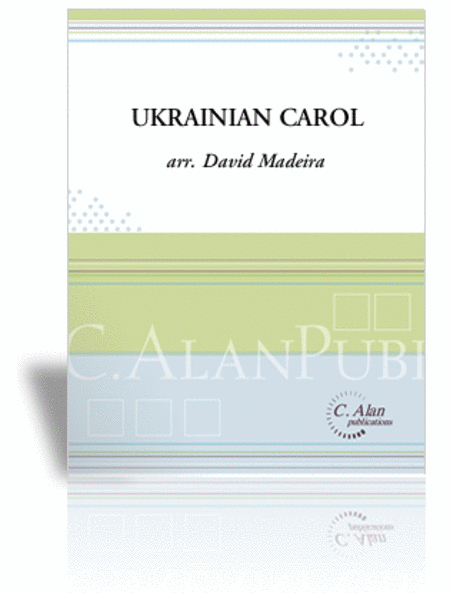
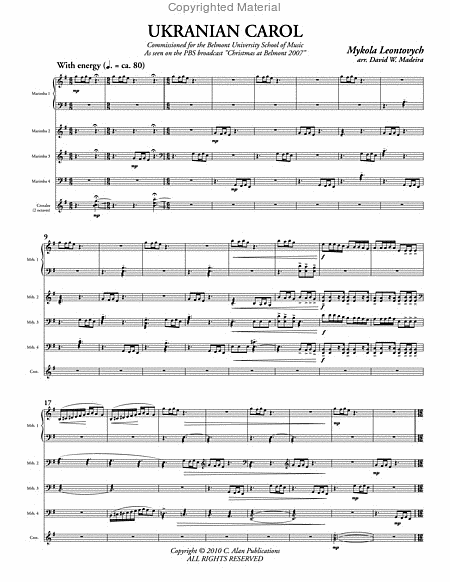
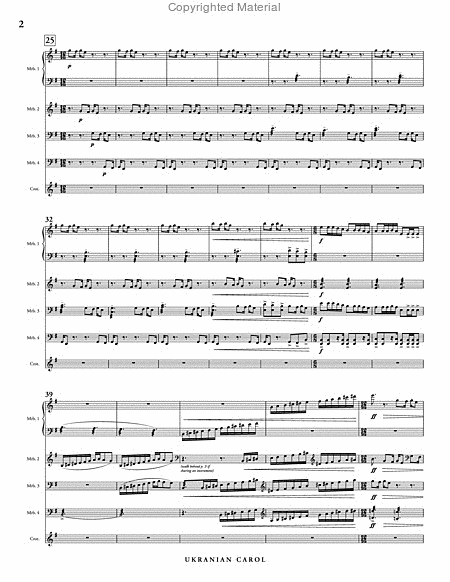
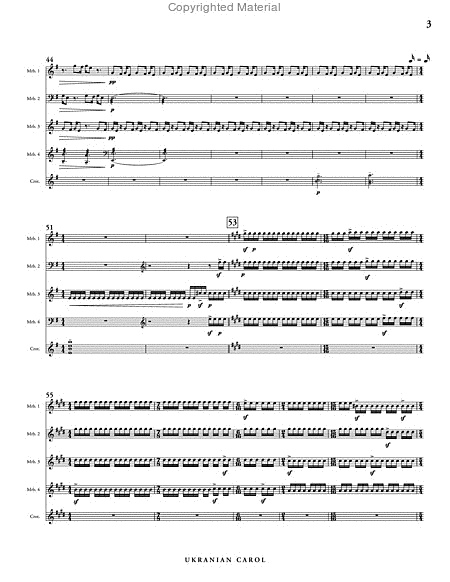
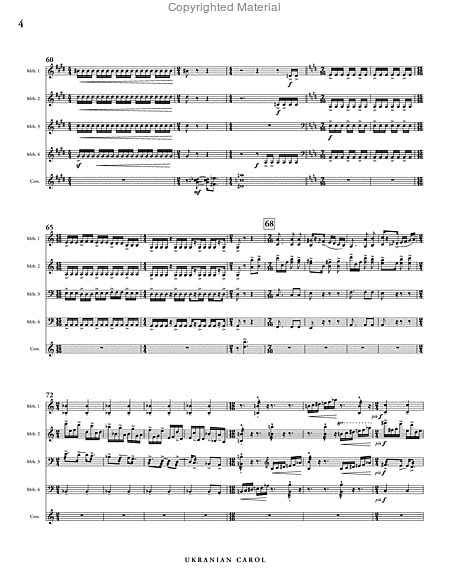
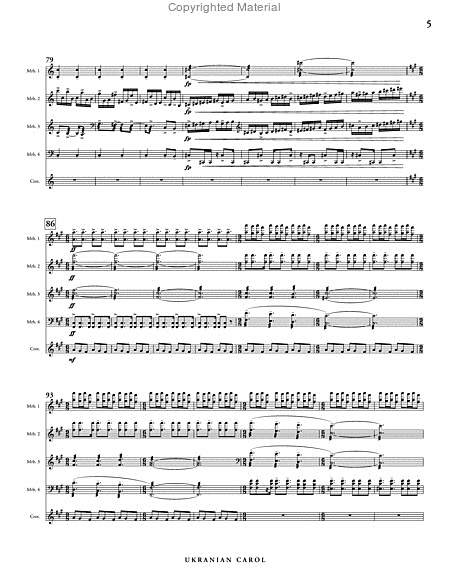
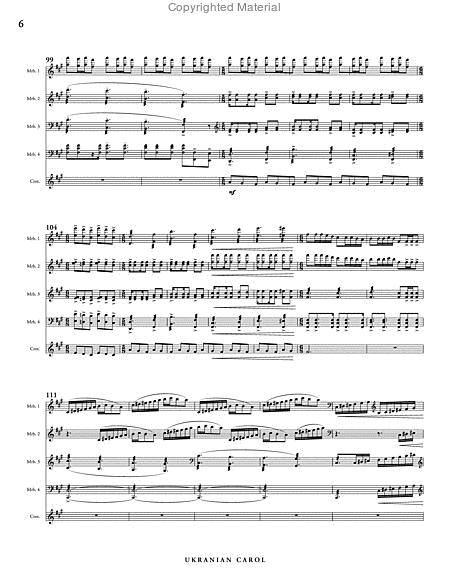
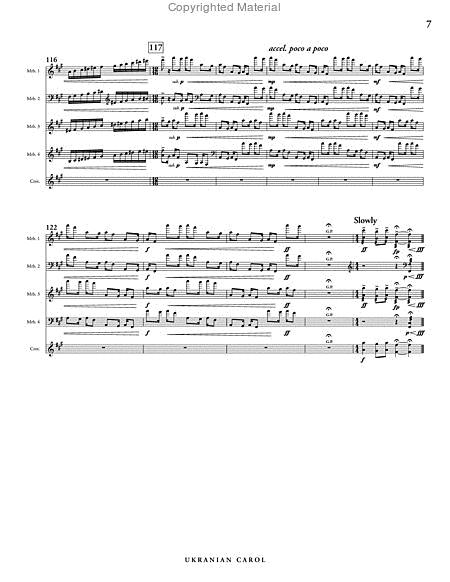
 Share
Share